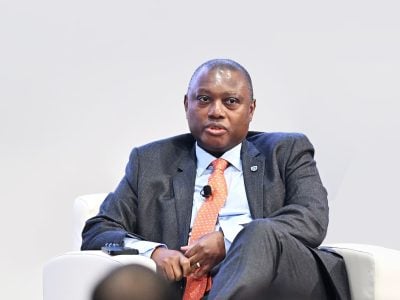Women currently oversee just 6% of the total funds managed in Africa, with their roles often restricted to the micro and small-scale sectors, but growing interest in gender lens investment could see real change in the investment landscape.
A string of research projects has demonstrated that more diverse teams adopting gender-aligned strategies generate higher returns, so the benefits are commercial as well as in promoting gender equality and social fairness.
In order to highlight the challenges and the opportunities, Educate Global and African Business organised a webinar attended by leading female voices in the African financial services industry.
For the uninitiated, gender lens investment takes gender-based factors into consideration to advance gender equality and better inform investment decision making.
Sandrine Henton, managing director of Educate Global, a private equity asset management company based in Nairobi that invests in companies in the food, health and education sectors, said: “Investing in women is not just good for impact but is also good for business.” Educate Global is over 65% women-owned.
Recent research by the International Finance Corporation of the World Bank calculated that gender balanced teams in private equity generated 20% higher rates of return than average. If you fund more women fund managers, you will fund more women entrepreneurs. By contrast, it is widely recognised that people invest according to their bias, so women-led and owned businesses are less likely to attract funding if those allocating that funding are overwhelmingly men.
The trend is certainly in the right direction. Alternative investment strategies focused on female fund managers and gender lens investing today account for $7.7bn of assets under management, 61% more than in 2018. Moreover, the G7 has committed to inject $15bn into gender lens investment by 2022.
Jen Braswell, director of value creation strategies, at British development finance institution (DFI) CDC Group, told the webinar that “valuing how and where women play is simply good investing… There’s a lot of momentum around the idea of gender lens investing… but we need to not be distracted with other factors.”
At least 40% of African SMEs are owned by women but only 20% of these have access to institutional finance, creating a funding gap of about $42bn.
Lindeka Dzedze, Executive Head: Institutional Clients, Global Markets at Standard Bank Group, which has set a target of ensuring 40% of group executive roles are held by women by 2023, commented: “We are seeing significant progress and change but we need to accelerate that pace of change. Even where funds are in place, it can be difficult for female-led businesses to find out about them.”
Dzedze said that Standard Bank had a three-month campaign to market its initiatives and works with female entrepreneurial organisations, as well as identifying partners through its own networks. Dzedze herself worked on setting up the African Women Impact Fund.
Pandemic recovery
The Covid-19 crisis has put a very clear spotlight on the challenges facing women in Africa because it has added to the already heavy care burden that women are placed under, increasing the desire by the investment community to invest in sectors that support the care economy.
Seun Toye-Kayode, Vice President, Head of Launch with GS EMEA at Goldman Sachs, said that one of the benefits of gender lens investing was “ensuring that capital gets into the hands of those who need it the most”.
“Put quite simply, if we don’t put money in the hands of women, the issues that we have in the world will not be resolved”, she added.
Goldman Sachs is seeking to create change across all the organisations that it works with as well as within its own doors. Last year it introduced a policy of not taking any company public that does not have at least one woman or other diverse member on its board and as of July 2021, it is increasing this minimum threshold to two board members, including at least one woman.
Henton agreed that there was momentum towards gender-aligned strategies that seek to address bias in pandemic recovery strategies. Recent research highlighted a correlation between women fund managers and increased fund allocation in the recovery sectors, such as health, food, education and digital services, although many fund managers are unsure how to proceed.
“Many institutional investors are still missing out on the possibility of generating superior returns by investing in diverse teams and gaining fresh insights for compelling investment strategies for Africa”, noted Henton.
Working together for change
There is a danger that the current upsurge of interest in gender lens investing will be a temporary blip but Braswell is convinced that there is now a critical mass of men and women ready to pursue change. The debate now should be about the mechanics of achieving it.
“Operationalising a gender strategy is not as easy as saying ‘we’re making a commitment and here’s our ambition’; it requires change management,” she said, adding “gender lens investing is an idea whose time has come” and that it is up to everyone to make sure real change is achieved.
However, there is currently remarkably little investment data on gender splits because companies and institutions are not looking for it. Although there is the capacity to generate the required information and it is straightforward to take women into account because they are easy to identify, “that lack of data makes it hard to invest with purpose”, said Braswell.
Shared definitions and reporting frameworks are needed, so data can be comparable across the industry, so CDC set out agreed minimum standards in its 2X Challenge in partnership with other DFIs. The Challenge calls on DFIs to mobilise both their own funds and private capital to advance women as entrepreneurs and business leaders.
The capital to support gender lens investment already exists. Henton said that the investment landscape in Africa was dominated by very large funds that already exhibit a discrepancy between the amount of capital they are raising and the amount they are deploying.
More capital needs to be brought to the real economy and to medium-sized companies, rather than the current narrow focus on infrastructure, energy, financial services and tourism she said.
Perhaps the greatest challenge will be moving from gender lens investment being a side issue to becoming a fundamental part of business strategy. Toye-Kayode said that much depends on where such initiatives are positioned within an organisation: they have to become important strategies for core departments.
Organisations that are currently devising their diversity strategies need to bring a good team together and make any goals public because then there is more accountability, she advised.
Fundamentally, it will take the entire sector to make the change and that has not happened yet. Goldman Sachs had hoped that other investment banks would follow its lead on board representation but that has not happened yet.
Toye-Kayode argued: “It’s not one strategy or one firm that is going to make a difference. We all have to come together: we have to look at it from the top end, from the bottom end and from everything in between.”
Having more women on boards will help but it will not solve the problem alone.
Want to continue reading? Subscribe today.
You've read all your free articles for this month! Subscribe now to enjoy full access to our content.
Digital Monthly
£8.00 / month
Receive full unlimited access to our articles, opinions, podcasts and more.
Digital Yearly
£70.00 / year
Our best value offer - save £26 and gain access to all of our digital content for an entire year!
 Sign in with Google
Sign in with Google 



